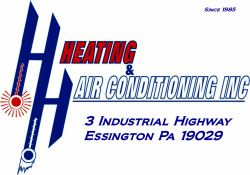 The winter usually brings indoor air quality challenges. But this year, indoor air quality concerns are exacerbated by the threat of COVID-19. How can you keep your family safe and healthy within your home while the weather outside is cold and miserable?
The winter usually brings indoor air quality challenges. But this year, indoor air quality concerns are exacerbated by the threat of COVID-19. How can you keep your family safe and healthy within your home while the weather outside is cold and miserable?
7 Ways to Improve Air Quality in Your Home Over the Winter
- Filter out contaminants.
Air filters are your first line of defense against airborne pollutants. Upgrade your air filter to newer HEPA filtration options to remove more contaminants, such as dust, pollen, dander, mold, mildew, viruses, and bacteria, trapping them before they can spread throughout your home. - Step up your game with an air purifier.
Whole-home air purifiers, which work in conjunction with your heating and cooling system to clean the air circulating throughout your entire home, can purify the air in your home several times per hour, capturing and/or killing airborne contaminants before they are spread through your home. - Zap germs in the air and on surfaces.
Tired of constantly cleaning high-touch surfaces? The Air Scrubber by Aurus can effectively remove up to 99% of microbes, particulates, and gases moving through your heating and cooling unit AND eliminate contaminants from surfaces. Learn more. - Check your ducts.
Like those high shelves you never bother to dust because you can’t see them, your ductwork can become coated with dust and airborne contaminants, spreading them throughout your home. If you can’t remember the last time you’ve had this service, have your ducts professionally inspected, cleaned, and sealed. - Keep things clean – without the chemicals.
Vacuum, mop, and wipe down surfaces regularly, avoiding synthetic chemicals and choosing natural, non-toxic cleaning products and air fresheners to prevent the buildup of toxic VOCs in your home. - Increase ventilation.
Because of the COVID crisis, we all know the solution to pollution is dilution. But how do you freshen air when it’s freezing outdoors? Reduce your pollutants in your home with added ventilation. Talk to your HVAC professional about available options that bring fresh air into your home without impacting the temperature and comfort level in your home, such as energy recovery ventilators. - Control humidity.
Extremely dry winter air is bad for indoor air quality in your home. Without adequate moisture, contaminants remain airborne longer, spreading throughout your home. Dry skin and nasal passages can crack and bleed, increasing your likelihood of exposure to germs. Fortunately, these problems are easily solved with the addition of a whole-house dehumidification system. This affordable technology does all the work for your, monitoring humidity levels in your home and adding moisture when needed. Attached as part of your HVAC system, it can manage the humidity levels throughout your home.
Take control of your health this winter. Improve the indoor air quality in your home with the help of H & H Heating & Air Conditioning today.
This blog was originally posted on https://www.delcohvac.com/blog/winters-can-worsen-indoor-air-quality-in-our-homes-heres-how-to-improve-it/

 This year, with the COVID pandemic, reducing the levels of the pollutants in the air circulating throughout your home is crucial. Research has shown air trapped inside residential homes is significantly more polluted than outdoor air. Volatile organic compounds (VOCs) from cleaners, off-gassing of furnishings, allergens like pollen and pet dander, and mold, bacteria, and viruses can quickly buildup in your home, creating an unhealthy environment. How can you protect your family from these contaminants and
This year, with the COVID pandemic, reducing the levels of the pollutants in the air circulating throughout your home is crucial. Research has shown air trapped inside residential homes is significantly more polluted than outdoor air. Volatile organic compounds (VOCs) from cleaners, off-gassing of furnishings, allergens like pollen and pet dander, and mold, bacteria, and viruses can quickly buildup in your home, creating an unhealthy environment. How can you protect your family from these contaminants and 




